Sōhei And Yamabushi: Fearsome Ancient Warrior Monks Of Japan
Ellen Lloyd - AncientPages.com - In Europe, the Knights Templar were the first known warrior monks, active during the Crusades.
However, warrior monks did not only exist in Europe. In other parts of the world, like Japan, religious organizations trained monks to live an ascetic lifestyle and engage in violent conflicts by becoming great warriors.
Credit: Adobe Stock - satoriartworkco
The Sōhei were deeply religious, yet they were regarded as fearsome warriors. The Yamabushi were mysterious mountain-wandering warrior monks searching for spiritual and supernatural powers. They, too, could be very violent and dangerous.
Sōhei: Powerful Buddhist Warrior Monks Of Medieval And Feudal Japan
The Sōhei were influential Buddhist warrior monks of both medieval and feudal Japan. These monk soldiers were easily recognizable because of the white cowls they wore over their heads which were shaved, like all monks. The Sōhei first appeared during the Heian period from 794 to 1185.
It is the period in Japanese history when Buddhism, Taoism, and other Chinese influences were at their height.
The reason why the Sōhei became warriors was power and control. The warrior monks played a vital role when bitter political feuds began between different temples, different subsects of Buddhism, over imperial appointments to the top temple positions.
In the 10th century, the Emperor and his government still retained a great deal of power. This power included appointing which monk would run a particular temple. However, the factional divisions within Buddhist monks and the simple realities of palace politics meant that a member of one faction was appointed as the head of a temple controlled by a rival faction. A dispute between two shrines led to the establishment of a standing army of monks at the Yasaka Shrine in Kyoto. It led to a warrior monk arms race.
Sometimes the disputes ended, and there was peace, but a new conflict arose, and the monk went to war again.
The Sōhei employed a variety of weapons. The most common sword was the tachi, a traditional sword worn by the Samurai warriors. The warrior monks also used blades, daggers, and the heavy kanabō, a large club forged of solid iron.
Credit: Adobe Stock - Roman Samokhin
At some point, the Sōhei co-existed with Samurai warriors during the same period.
Yamabushi: Mountain-Wandering Warrior Monks Searching For Spiritual And Supernatural Powers
The mysterious Yamabushi were mountain-wandering warrior monks searching for spiritual and supernatural powers.
Although they mainly kept to themselves for the most part solitary, they did form loose confederations and associations with certain temples occasionally. They also sometimes participated in battles and skirmishes alongside Samurai and Sōhei warrior monks.
The Yamabushi emerged in the eighth and ninth centuries in Japan.
Their beliefs were based on pieces from different religions. The Yamabushi believed that to become spiritually enlightened, one must have a close relationship with nature over a long time.
They also believed that communing with nature would give a person supernatural powers. During their long journeys, the Yamabushi often had to defend themselves, which is why they were trained in martial arts.
Religion combined with violence stretches far back in our history.
Written by Ellen Lloyd – AncientPages.com
Updated on August 12, 2022
Copyright © AncientPages.com All rights reserved. This material may not be published, broadcast, rewritten or redistributed in whole or part without the express written permission of AncientPages.com.
More From Ancient Pages
-
 Was Prehistoric Baghdad Battery A Unique Find Of The Ancients? – Did Its Manufacturers Discover Electricity By Accident?
Ancient Technology | Mar 8, 2019
Was Prehistoric Baghdad Battery A Unique Find Of The Ancients? – Did Its Manufacturers Discover Electricity By Accident?
Ancient Technology | Mar 8, 2019 -
 Francis Drake, Queen’s Pirate And One Of The Founders Of English Naval Force
History | Apr 12, 2020
Francis Drake, Queen’s Pirate And One Of The Founders Of English Naval Force
History | Apr 12, 2020 -
 Mysterious Death Of 20 Celts Who Died 2,000 Years Ago In The Three Lakes, Switzerland – Re-Examined
Archaeology | Jun 17, 2024
Mysterious Death Of 20 Celts Who Died 2,000 Years Ago In The Three Lakes, Switzerland – Re-Examined
Archaeology | Jun 17, 2024 -
 Secrets Of The Freemasons – Masonic Symbols Reveal Worship Of Ancient Mother Goddesses
Ancient Mysteries | Jun 18, 2018
Secrets Of The Freemasons – Masonic Symbols Reveal Worship Of Ancient Mother Goddesses
Ancient Mysteries | Jun 18, 2018 -
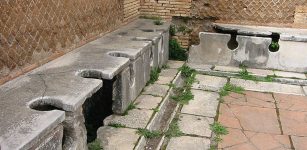 The Romans Spread Parasites – Their Hygienic Innovations Gave No Health Benefit
Archaeology | Jan 9, 2016
The Romans Spread Parasites – Their Hygienic Innovations Gave No Health Benefit
Archaeology | Jan 9, 2016 -
 Unexpected Discovery 130,000-Year-Old Neanderthal Stone Tools In Poland
Archaeology | Oct 30, 2023
Unexpected Discovery 130,000-Year-Old Neanderthal Stone Tools In Poland
Archaeology | Oct 30, 2023 -
 48,000-Year-Old Tooth That Belonged To Neanderthal Child Found In Northern Italy
Fossils | Sep 19, 2020
48,000-Year-Old Tooth That Belonged To Neanderthal Child Found In Northern Italy
Fossils | Sep 19, 2020 -
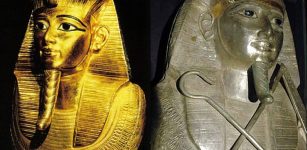 Pharaoh Psusennes I Buried In The Silver Coffin Inlaid With Gold
Civilizations | Jul 16, 2016
Pharaoh Psusennes I Buried In The Silver Coffin Inlaid With Gold
Civilizations | Jul 16, 2016 -
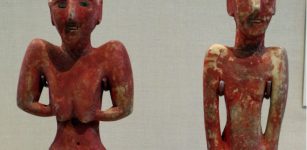 Male-Female Roles 7,000 Years Ago Were Less Traditional Than Previously Thought – New Study Reveals
Archaeology | Jun 30, 2022
Male-Female Roles 7,000 Years Ago Were Less Traditional Than Previously Thought – New Study Reveals
Archaeology | Jun 30, 2022 -
 Millennia Old Extremely Complex Object Of Unknown Origin
Ancient Technology | Jul 8, 2020
Millennia Old Extremely Complex Object Of Unknown Origin
Ancient Technology | Jul 8, 2020 -
 Modern Human DNA Contains Bits From All Over The Neanderthal Genome – Except The Y Chromosome. What Happened?
DNA | Jul 2, 2024
Modern Human DNA Contains Bits From All Over The Neanderthal Genome – Except The Y Chromosome. What Happened?
DNA | Jul 2, 2024 -
 Countless Artifacts, Structures And Roads Discovered In Ancient City Of Aigai, Turkey
Archaeology | May 16, 2022
Countless Artifacts, Structures And Roads Discovered In Ancient City Of Aigai, Turkey
Archaeology | May 16, 2022 -
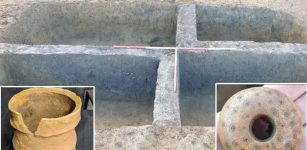 Unknown Saxon Village And Bronze Age Artifacts Found Near Ely, Cambridgeshire
Archaeology | Sep 18, 2023
Unknown Saxon Village And Bronze Age Artifacts Found Near Ely, Cambridgeshire
Archaeology | Sep 18, 2023 -
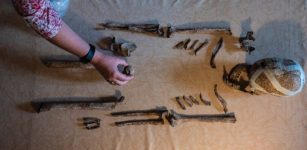 Who Was The The Mysterious Lady Of Bietikow And What Had She In Common With Ötzi Iceman?
Archaeology | Nov 6, 2020
Who Was The The Mysterious Lady Of Bietikow And What Had She In Common With Ötzi Iceman?
Archaeology | Nov 6, 2020 -
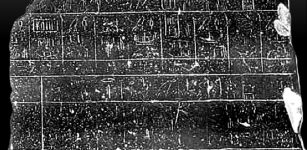 Palermo Stone: One Of The Earliest History Records Of Ancient Egypt
Artifacts | Apr 15, 2016
Palermo Stone: One Of The Earliest History Records Of Ancient Egypt
Artifacts | Apr 15, 2016 -
 Unexplained Mystery Of The Glowing Woman Who Baffled Scientists
Featured Stories | Jun 6, 2022
Unexplained Mystery Of The Glowing Woman Who Baffled Scientists
Featured Stories | Jun 6, 2022 -
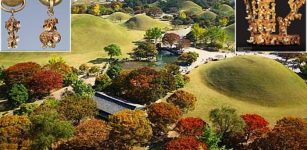 Silla: The Most Successful Of Three Korean Kingdoms
Featured Stories | Aug 22, 2023
Silla: The Most Successful Of Three Korean Kingdoms
Featured Stories | Aug 22, 2023 -
 Roman Leather Toy Mouse Found At Vindolanda
Archaeology | Jun 6, 2023
Roman Leather Toy Mouse Found At Vindolanda
Archaeology | Jun 6, 2023 -
 Extremely Rare English Medieval Shipwreck With Fascinating Cargo Discovered In Poole Bay, Dorset
Archaeology | Jul 23, 2022
Extremely Rare English Medieval Shipwreck With Fascinating Cargo Discovered In Poole Bay, Dorset
Archaeology | Jul 23, 2022 -
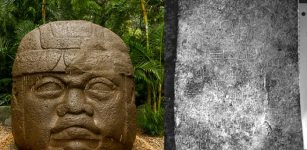 Mystery Of The Controversial Cascajal Block – Oldest Writing In The Americas
Artifacts | Oct 12, 2017
Mystery Of The Controversial Cascajal Block – Oldest Writing In The Americas
Artifacts | Oct 12, 2017


